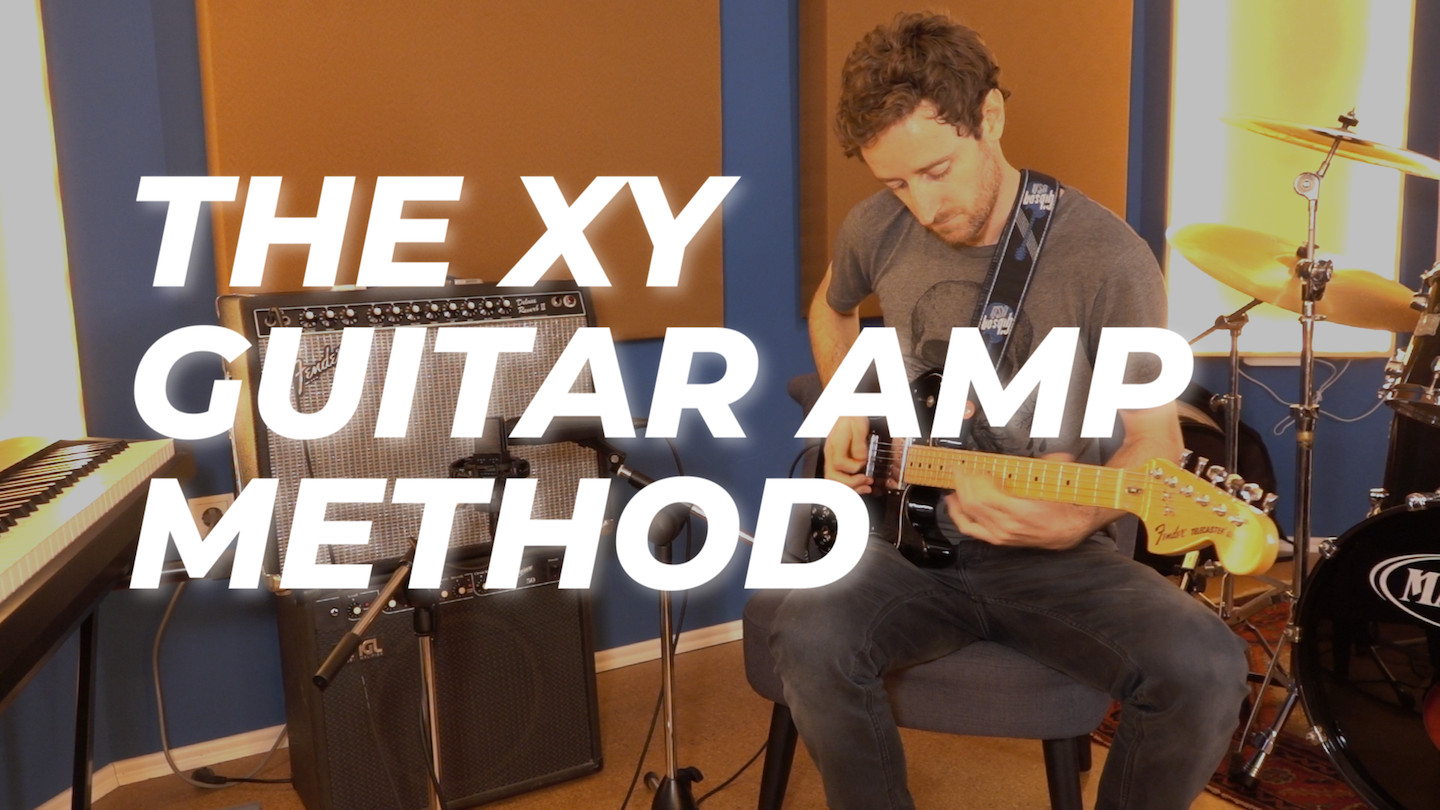Capturing the raw energy and tone of a guitar amp is crucial for any recording, but it can be a tricky endeavor. Many guitarists and home recording enthusiasts struggle to translate the sound they hear in the room to a recorded track that truly delivers. The secret often lies in choosing the right Guitar Amp Microphone and understanding how to use it effectively. If you’ve ever been frustrated with recorded guitar tones that sound thin, brittle, or just not quite “right,” you’re not alone. This guide will walk you through selecting the best microphone for your guitar amp and techniques to get a killer sound.
Understanding Microphone Types for Guitar Amps
When it comes to miking guitar amps, there are three main types of microphones that engineers and musicians commonly reach for: dynamic, condenser, and ribbon microphones. Each type possesses unique characteristics that lend themselves to different sonic flavors and recording scenarios.
Dynamic Microphones: Robust and Reliable
Dynamic microphones are often the workhorses of guitar amp recording. Known for their robustness and ability to handle high sound pressure levels (SPL), they are well-suited to the loud volumes emanating from guitar amplifiers. Dynamic mics typically offer a clear, direct sound, capturing the core tone of the amp. However, it’s worth noting that despite their name, they might not always provide the most “dynamic” or nuanced sound compared to other types when specifically used on guitar amps.
Popular dynamic microphones for guitar amps include the Shure SM57, Sennheiser MD421, and Beyerdynamic M88 TG.
Condenser Microphones: Capturing Detail and Nuance
Condenser microphones, in contrast to dynamics, are known for their sensitivity and extended frequency response. They excel at capturing the finer details and transients of a sound source, resulting in a more “dynamic” and open sound. For guitar amps, condenser mics can bring out the high-end sparkle and low-end depth, adding a sense of air and life to the recording.
While sometimes perceived as more delicate than dynamic mics, many condensers can still handle the high SPL of a guitar amp, especially large-diaphragm models. They can be particularly effective for capturing clean tones or adding a layer of detail when blended with a dynamic mic.
Ribbon Microphones: Warmth and Smoothness for Harsh Tones
Ribbon microphones are often considered the vintage choice for guitar amps. Characterized by their warm, smooth, and often darker sonic signature, ribbon mics are particularly effective at taming harsh or overly bright guitar tones, especially from distorted amps. Their unique frequency response naturally rolls off some of the high frequencies that can become abrasive in guitar recordings.
While traditionally more fragile and less common than dynamic or condenser mics, modern ribbon microphones are becoming more robust and are increasingly used in studios for their distinctive sonic qualities on guitar amps.
The SM57 Debate: Is It the Only Guitar Amp Mic You Need?
 record guitar amps condenser dynamic mic
record guitar amps condenser dynamic mic
The Shure SM57 has achieved legendary status as a guitar amp microphone. Its ubiquity in studios and live sound setups is undeniable, particularly cemented during the era of iconic amps like the Marshall JCM800. The common wisdom was simple: place an SM57 in front of a 4×12 cabinet, and you’re ready to rock.
However, while the SM57 is a reliable and versatile microphone, it’s not always the ideal choice for every guitar amp recording scenario. Many engineers and guitarists find the SM57 to have a somewhat hard or even harsh sound when used on guitar amps. Clean tones can sometimes lack clarity and depth, and overdriven or distorted guitars can sound brittle and aggressive, lacking warmth and body. This isn’t to say the SM57 is a bad microphone – it’s a tool, and like any tool, it has its strengths and weaknesses depending on the application.
Dynamic Microphone Alternatives for Guitar Amps
If you’re looking beyond the SM57 for dynamic microphone options that can deliver a richer and more nuanced guitar amp sound, consider the Sennheiser MD421 or the Beyerdynamic M88 TG.
The Sennheiser MD421 is renowned for its clear yet rounded tone. It captures the punch and directness of a dynamic mic while offering a smoother frequency response than the SM57, resulting in a less harsh sound on guitar amps. It’s a versatile choice that works well on a variety of amp tones, from clean to moderately driven.
The Beyerdynamic M88 TG offers a different flavor, imparting a vintage character to guitar amps reminiscent of ribbon microphones. It captures a warm, full-bodied sound with a pleasing low-end presence, making it excellent for adding depth and character to guitar recordings. Like the MD421, it handles high SPLs with ease and is built to withstand the rigors of studio and stage use. Both of these microphones provide robust build quality and sonic alternatives to the SM57 for capturing dynamic guitar amp tones.
Condenser Microphones: Adding Depth and Detail to Guitar Amp Recordings
To unlock a greater level of detail and dimension in your guitar amp recordings, incorporating a condenser microphone can be transformative. Condenser mics excel at capturing the subtle nuances and transients of a guitar amp’s sound, revealing elements that dynamic mics might miss.
Blending a dynamic microphone with a large-diaphragm condenser microphone can often yield the best of both worlds. The dynamic mic captures the direct, punchy core tone, while the condenser mic adds air, sparkle, and a wider frequency range, resulting in a more complete and sonically rich guitar sound. This combination allows you to achieve clarity and directness alongside the depth and detail that a condenser mic provides.
When using multiple microphones on a guitar amp, it’s crucial to pay attention to phase alignment. Ensure that the microphones are positioned at roughly the same distance from the speaker cone. If creative positioning at different distances is desired, be prepared to phase-align the signals during mixing using delay compensation. Out-of-phase microphone signals can lead to undesirable cancellation and a thin, weak sound.
The “Secret” XY-Inspired Technique for Guitar Amps: Blending Dynamic and Condenser Mics
Now, let’s explore a technique inspired by the classic XY stereo miking method, adapted for guitar amps to achieve a balanced and natural tone using both dynamic and condenser microphones. While true XY is a stereo technique, this adaptation utilizes the principles to create a blended mono signal.
The method involves positioning one large-diaphragm cardioid condenser microphone and one cardioid dynamic microphone in close proximity to each other, directly in front of the guitar amp speaker cone. The key is the placement angle: point the condenser microphone towards the right edge of the speaker cone and the dynamic microphone towards the left edge, creating an approximate 90-degree angle between the microphones.
 Mixing Engineer
Mixing Engineer
By pointing the microphones slightly off-axis from the center of the speaker cone, the cardioid polar pattern of each mic naturally reduces the harsh high frequencies that can emanate from the speaker’s center. Blending the signals from both microphones into a single channel or bus results in a balanced tone that captures the essence of the guitar amp without the unnaturally harsh or abrasive frequencies that can sometimes arise from close-miking. This technique aims to create a cohesive and well-rounded guitar amp sound right at the source.
Recommended Microphone Combinations for XY-Inspired Guitar Amp Miking
Experimentation is always encouraged, and the best guitar amp microphone is often the one you have readily available. However, certain microphone pairings have proven to be particularly effective for this XY-inspired technique:
- AKG C414 (B-ULS!) / Sennheiser MD421
- AKG C414 (B-ULS!) / Beyerdynamic M88 TG
- Røde NT1A / Shure SM57
- Audio Technica AT4040 / Sennheiser MD421
Feel free to mix and match from these suggestions or explore combinations with microphones you already own. The core principle remains the same: blend the characteristics of a dynamic and condenser microphone using the angled placement to achieve a balanced and detailed guitar amp tone.
Wrapping Up
Choosing the right guitar amp microphone and employing effective miking techniques are essential steps in capturing professional-sounding guitar recordings. Remember to trust your ears above all else. Record, listen critically, adjust microphone positions, and repeat until you achieve the desired sound. Experience is the greatest teacher, so take the time to experiment with different microphones and techniques. By understanding the characteristics of dynamic, condenser, and ribbon microphones, and exploring methods like the XY-inspired blending technique, you’ll be well-equipped to capture the true voice of your guitar amp in your recordings.

